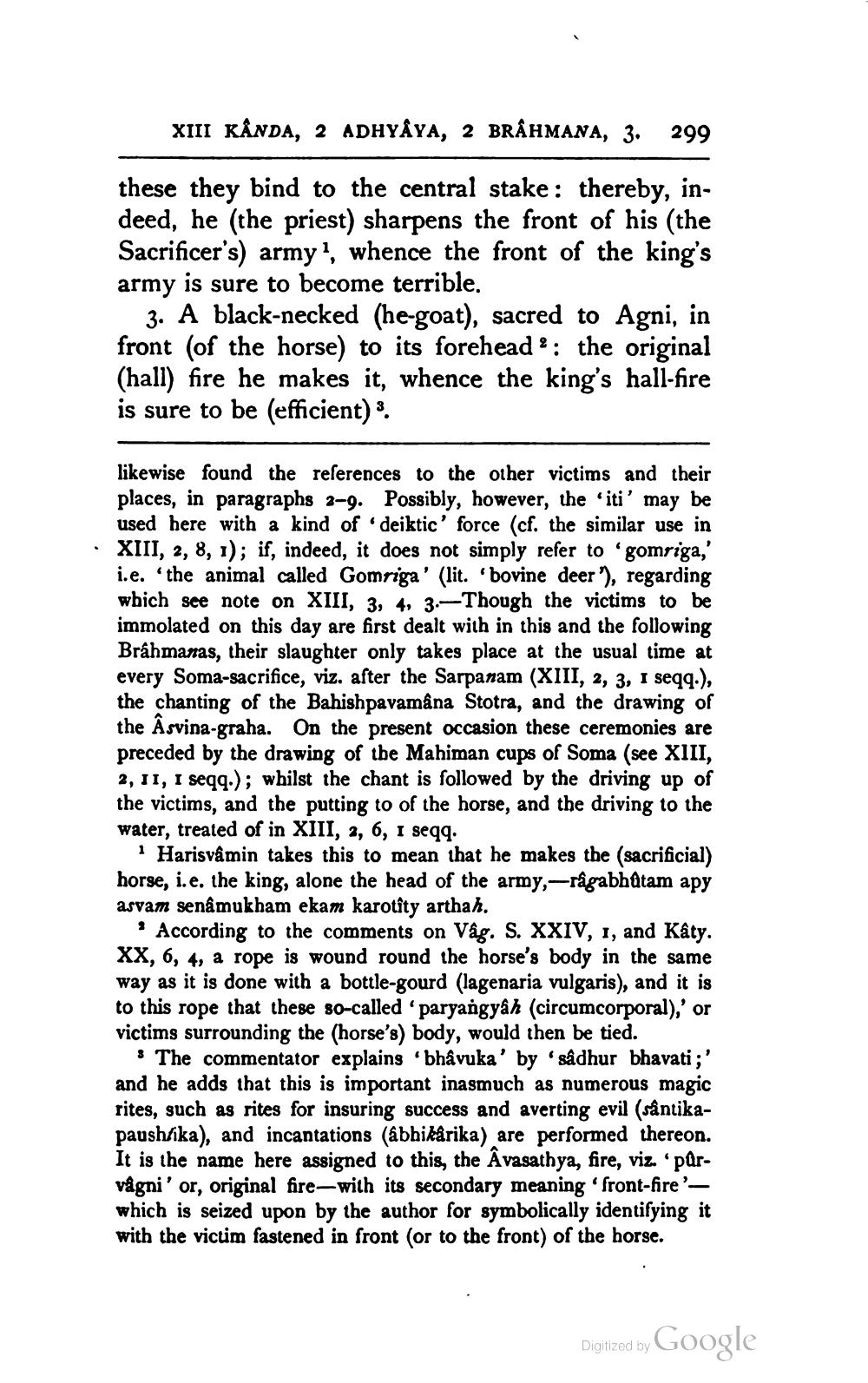________________
XIII KANDA, 2 ADHYAYA, 2 BRAHMANA, 3. 299
these they bind to the central stake: thereby, indeed, he (the priest) sharpens the front of his (the Sacrificer's) army, whence the front of the king's army is sure to become terrible.
3. A black-necked (he-goat), sacred to Agni, in front (of the horse) to its forehead: the original (hall) fire he makes it, whence the king's hall-fire is sure to be (efficient)3.
likewise found the references to the other victims and their places, in paragraphs 2-9. Possibly, however, the 'iti' may be used here with a kind of 'deiktic' force (cf. the similar use in XIII, 2, 8, 1); if, indeed, it does not simply refer to 'gomriga,' i.e. the animal called Gomriga' (lit. 'bovine deer'), regarding which see note on XIII, 3, 4, 3.-Though the victims to be immolated on this day are first dealt with in this and the following Brahmanas, their slaughter only takes place at the usual time at every Soma-sacrifice, viz. after the Sarpanam (XIII, 2, 3, 1 seqq.), the chanting of the Bahishpavamâna Stotra, and the drawing of the Âsvina-graha. On the present occasion these ceremonies are preceded by the drawing of the Mahiman cups of Soma (see XIII, 2, II, I seqq.); whilst the chant is followed by the driving up of the victims, and the putting to of the horse, and the driving to the water, treated of in XIII, 2, 6, I seqq.
1 Harisvâmin takes this to mean that he makes the (sacrificial) horse, i.e. the king, alone the head of the army,-râgabhutam apy asvam senâmukham ekam karotîty arthah.
According to the comments on Vâg. S. XXIV, 1, and Kâty. XX, 6, 4, a rope is wound round the horse's body in the same way as it is done with a bottle-gourd (lagenaria vulgaris), and it is to this rope that these so-called 'paryangyâh (circumcorporal),' or victims surrounding the (horse's) body, would then be tied.
The commentator explains 'bhâvuka' by 'sâdhur bhavati;' and he adds that this is important inasmuch as numerous magic rites, such as rites for insuring success and averting evil (sântikapaushika), and incantations (âbhikârika) are performed thereon. It is the name here assigned to this, the Avasathya, fire, viz. 'pûrvâgni' or, original fire-with its secondary meaning 'front-firewhich is seized upon by the author for symbolically identifying it with the victim fastened in front (or to the front) of the horse.
Digitized by
Google




